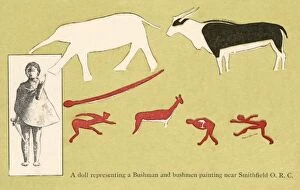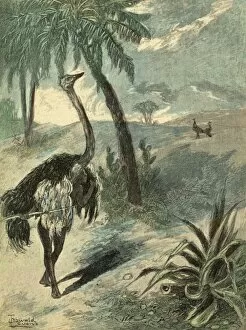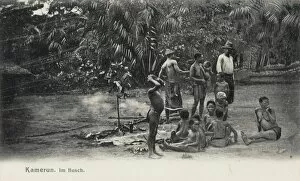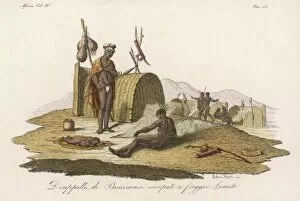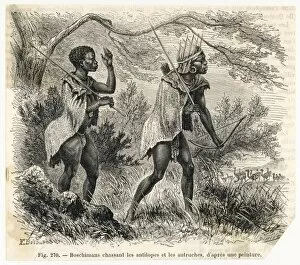Bushmen Collection (#4)
The bushmen, also known as the San people, are a fascinating African tribe with a rich cultural heritage
For sale as Licensed Images
Choose your image, Select your licence and Download the media
The bushmen, also known as the San people, are a fascinating African tribe with a rich cultural heritage. Their presence can be traced back thousands of years through various rock paintings found across Southern Africa. One such famous painting is the White Lady rock painting in Maack's Cave, which showcases their artistic prowess and storytelling abilities. In Lesotho, another captivating rock painting by the San Bushmen depicts scenes from their daily lives and hunting expeditions. This particular picture (No. 10872025) offers a glimpse into their unique way of existence and their deep connection to nature. Interestingly, even in far-off lands like Canada, there was once a demand for bushmen and sawmill hands to join the 238th Canadian Forest Battalion during World War I. This highlights the versatility and skills possessed by these resourceful people. The Drakensberg Royal Natal National Park in South Africa boasts stunning rock paintings created by the San bushmen. These intricate artworks provide insights into their spiritual beliefs and rituals that have been passed down through generations. Traditionally hunter-gatherers, the San people have honed exceptional hunting skills over time. Springbok Hunting remains an important aspect of their culture till today - showcasing both survival techniques and reverence for wildlife. Dancing holds immense significance within bushmen culture too; it serves as a form of expression and celebration. Whether it's a tribal dancer or young girls ready to perform in Manghetti dunes, these images capture moments filled with rhythm, joy, and unity among community members. Lastly, we must not forget about the remarkable women who play vital roles within this society – like Hottentot Bush woman from South Africa pictured here – contributing to its resilience throughout history.






